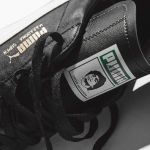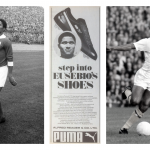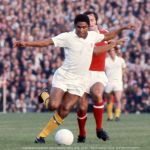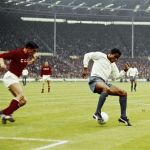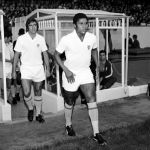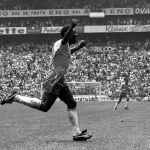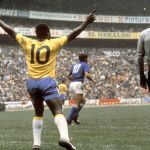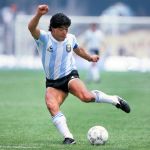
Puma King: the boots at the feet of the Gods
From Pele to Maradona, from Cruyff to Neymar: all the great players have worn the Puma King
September 14th, 2020
First the restyling in collaboration with Rhude and now the signature and the images of Neymar Jr: the PUMA King are back for real. The work of the German brand - which has invested more than half a billion in the last 5 years - is a perfect balance between legend and innovation, between new trends and traditions that never go out of fashion. The PUMA King, seen for the first time ever at the foot of PSG #10 last night during the match against Marseille, follow exactly the same balance, thanks to a style that does not change from Pelè to Neymar. The fascinating story of one of the last aesthetic icons of football repeats itself and is ready to relive a new era.
When an item, like football boots, is destined to remain in humans’ symbolism, you can understand it from the fact that it stays the same through all generations. This history, in fact, begins in 1966, at the end of the World Cup organized and won by England, which will remain the only win in a major international tournament by football’s inventors. That edition’s top scorer is not from England, nor from West Germany, which arrived second that year. He’s from Maputo, Mozambique's capital city, but he has Lusitanic passport and, thanks to his goals, has led Portugal to a great third place. He’s called Eusébio, he scored 9 times in the tournament and in the next few years he will burn Europe down with his Benfica, winning almost everything. Puma, his technical provider, decided to celebrate this great accomplishment and in 1968 - a little bit late - presented the first pair ever of Puma King.
From there it starts a long list of champions, that maybe is not the best word to describe these “Football’s Gods” which will wear Puma King in historical moments for this sports, which legend was literally write with those shoes. In 1970 they were worn by Edson Arantes do Nascimento, mainly known as Pelé, which will sign his name in football’s Olympus forever in that World Cup. In addition to receiving a historical header from the Sunday Times after the winning final against Italy - “How do you spell Pelé? G-O-D” - O Rey also did one of the first marketing operations of all time. After the quarter-final against Perù, the Brazilian kneeled to tie his shoes, forcing all the others players to wait for a couple of minutes. Many people thought that was intentional, as all the cameras of the world were pointing at him and his shoes.
From that time, many champions felt in love with the King, which wrote many moments that defined the history of football and in particular the World Cup. Because after ’66 and ’70’s tournaments, also the 1974’s World Cup sees the Puma as protagonists. After the disastrous Munich’s Olympic in 1972, the World Cup is assigned to West Germany, in plain Cold War. Even if the home team will rise the trophy at the end, this tournament will be remembered for a team which redefined the concept itself of football, Netherland. In the Oranje, which game was called “Total Football” for a good reason, played a boy which were driving half Europe to madness and which, with his Puma King on his feet, scored the only goal of his team in the final, Johan Cruyff. Another marketing curiosity: even if Netherland was sponsored by adidas, Cruyff was so connected with Puma’s brand that he played all the tournament with a custom shirts, with just two stripes instead of three.
But if you think these shoes can reach higher apexes of glory, you’re wrong. Because until now King has been worn by gods, but to become legends they still need goD with capital D, as Diego. In 1986, El Diez not only won the World Cup, not only won the Golden Boot as the best player of the tournament, but he also scored two of the most famous goals in the history of football. One is the “Hand of God”, the hand touch which hoaxed England’s goalkeeper and avenged the Argentinian people after Falkland’s blood. The second has been called the “Goal of the Century” and that says it all. Maradona passes 6 players, touched the ball 11 times, scoring the goal that will roll out the Albiceleste to the World Cup’s victory. Diego played every minute of every game, taking Argentina and himself towards eternal glory. And he does it with Puma King on his feet.
It’s literally impossible to find, in the history of football, another pair of shoes as legendary as these ones. Sure, there are models that are better built, more publicized, more modern. Shoes worn by players that are undoubtedly destined to reach Maradona, Cruyff, Pelé and Eusébio in football’s Olympus. But no other shoes have been worn by so many legends at the same time and it will not likely happen again. To be fair, Puma made one, single mistake, the name. Because this heap of leather and legend deserved, or still deserve, to be called Puma God. The Gods’ shoes.








































.png)


.jpg)


.jpg)



























